Saigon is intense, noisy and polluted. Don’t worry, we love the place. But everyone needs a little green time.
Green spaces and public spaces have not been big priorities for Saigon's leaders during the city's three decades of rapid economic development. The largest green spaces were created during the French colonial era when the population was a fraction of what it is today. Not much has happened since on the public space front making Saigon a very densely packed city. That makes these green spaces ever more precious.

Photo: Mark Bowyer Afternoon in Saigon's Tao Dan Park
Saigon Zoo and Botanical Gardens
The zoo and gardens are a pleasant spot for some walking and some time amidst Saigon’s ever decreasing stock of grand old trees. Don’t visit for a zoological experience. Zoo conditions have improved but they’re pretty grim.
The zoo and gardens have an important place in Saigon’s history. When the French established the gardens in the 1860’s, soon after the city was colonised, they showcased the rich array of flora and fauna found in the newly established colony, and the region. They became a place for botanical cultivation and experimentation. Some of those original structures survive.
You’ll see a bust of the founder, Louis Pierre, as you arrive.
The zoo and gardens precinct is home to two important 1920s Saigon landmarks. The Vietnam History Museum is Saigon’s most important history museum, housed in an excellent example of Indochine architecture. It’s a good place to explore the city’s story minus the Vietnam War.
Directly opposite the museum is the Hung King temple. The temple architecture looks Vietnamese, but was designed by French architect, Auguste Delaval, who also designed the museum.
Originally built to remember little known Vietnamese lives lost supporting the French cause in World War I, the temple’s mission was changed after 1975 to remember the mythical Hung Kings - considered legendary founding fathers of the Vietnamese kingdom.
If you're lucky, you'll experience the place during a quiet time. On weekends and holidays things get busy and the loud music cranks up. If you're looking for peace, at these times, you'll be disappointed. The gardens are best visited in the early morning or late afternoon.

Photo: Mark Bowyer More of this please. Saigon Zoo and Botanical Gardens

Photo: Mark Bowyer Hung King Temple, Saigon
30 April Park
Named after the day the Vietnam War ended in April 1975, 30 April Park is a smaller park set between the Notre Dame Cathedral and the Reunification Palace (aka Independence Palace). It’s right downtown so you can’t miss it. North Vietnamese tanks rolled past here as they headed towards the then Presidential Palace in April 1975 - hence the name.
30 April Park is a small green space that gets busy with groups of young people hanging out - especially on weekends.

Photo: Mark Bowyer 30 April Park, Saigon

Photo: Mark Bowyer Propaganda - 30 April Park, Saigon
Tao Dan Park
This may be the best green space in the downtown area - and it’s well used by locals getting their daily exercise.
Tao Dan Park began its days as a centre of French colonial recreation as the Cercle Sportif. Once a centre for the colonial elite, then the South Vietnamese elite - including US officials - it was handed over to the Vietnamese people when the communists took over in 1975.
US Ambassador Henry Cabot-Lodge was a regular here in the early 1960s. William Colby, CIA station chief at the same time was a member too. (see video).
Sporting amenities include a fabulous 1930s swimming pool, tennis courts and a pétanque terrain. The pool is a great escape from the Saigon heat.
The section of the park that runs along Cach Mang Thang Tam St is home to a popular bird cafe. Locals gather here each morning with their caged birds, for coffee.

Photo: Mark Bowyer Afternoon in Saigon's Tao Dan Park

Photo: Mark Bowyer Petanque and the old Cercle Sportif, Tao Dan Park, Saigon
The Saigon riverfront
The Saigon Riverfront has long been one of the city’s most neglected public assets. It’s improving slowly and is a good spot for a late afternoon stroll. Start at the Majestic Hotel and then head south as the road swings around towards the old colonial banking district and the Ben Nghe Canal. You can read more about walking along the riverfront here.

Photo: Mark Bowyer Along the Saigon River

Photo: Mark Bowyer Along the Saigon River
Nguyen Hue Walking street
Saigon’s so-called walking street has a sun-scorched harshness that softens a little as the sun goes down. It would be far better with more grass and trees. The trees are coming along slowly. It’s a good spot for people watching and it's a popular spot for an evening stroll. You can read more about Nguyen Hue Walking Street here.

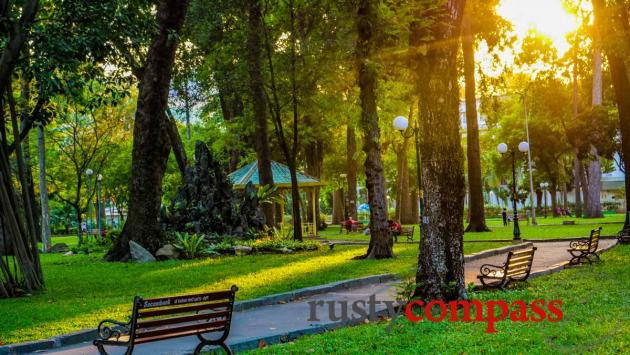
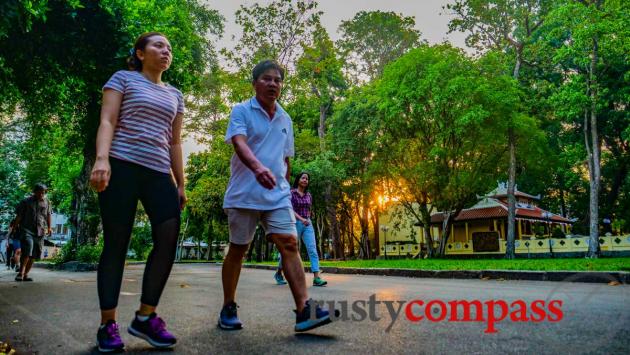
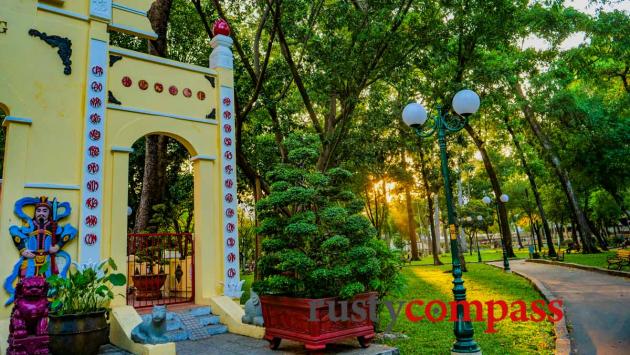
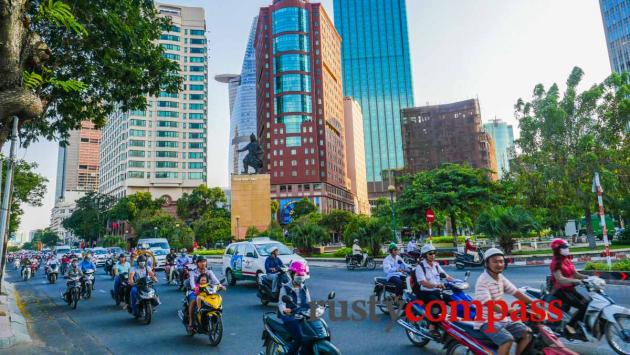
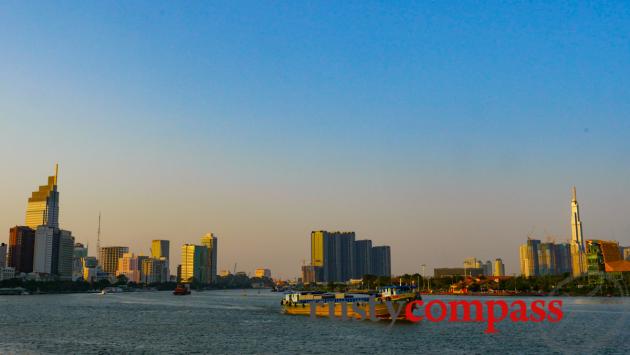
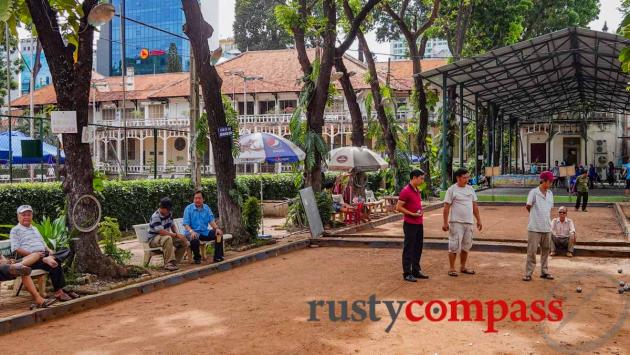
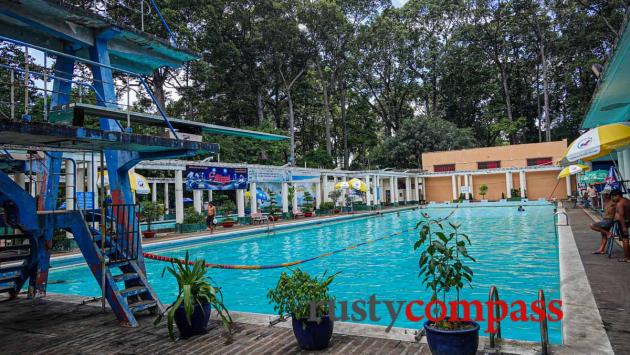
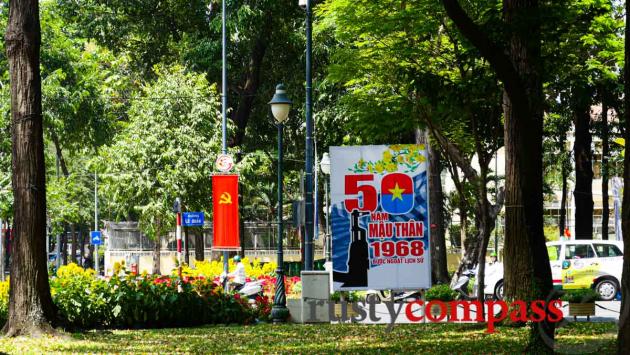







There are no comments yet.